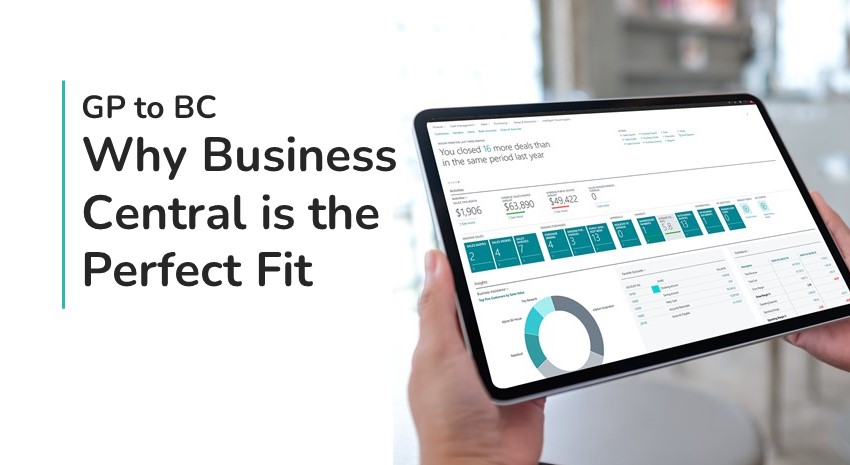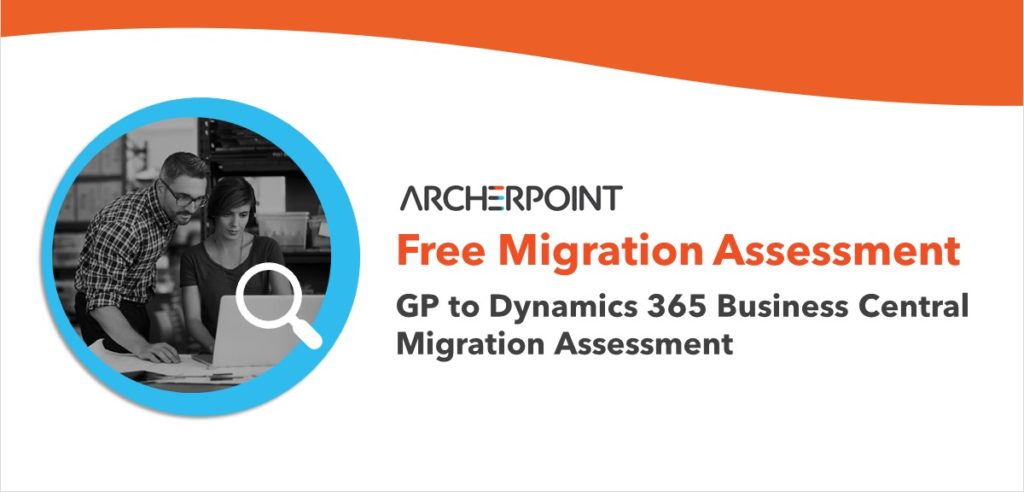Considering a Move From Microsoft Dynamics GP? Why Business Central Is the Right Choice

As we all know, Microsoft is continuing to support Microsoft Dynamics GP, but we also know that the company has also committed to cloud-first solutions. However, there has been confusion about which Dynamics product–Dynamics 365 Business Central (BC) or Dynamics 365 Finance (formerly known as Dynamics AX and often called 365 F&O, although the “O”, as in “Operations” has been split into a separate product)–is the right choice for companies looking to move from GP?
NOTE: While we have discussed in other blogs the advantages of staying with a Microsoft ERP offering over other, non-Microsoft ERP solutions, the focus of this blog is to state the case for why we think BC specifically, rather than 365 Finance, is the natural choice.
A blog post from StockIQ Technologies offered an excellent comparison of GP and BC, putting it right out there that “Microsoft wants you to choose Business Central. That said, here are some good reasons for that statement:
#1: Both Business Central and GP Were Designed For The Same Size Of Business
Accounting solutions are generally broken into three categories. For very small businesses without any sort of complex processes, QuickBooks and the like are usually satisfactory. Often, these businesses will even just use Excel. They get the job done if things are simple without a large workload, but when it’s time for a more broad-based solution, businesses will move to an ERP like GP.
Back in the day, there were many players in that small-to-midsize “emerging enterprise” market–including Dynamics NAV (Navision), SL (Solomon), and GP (Great Plains). Even before they were acquired by Microsoft, these ERPs were well known and suited for that market. Each had its strengths and weaknesses, but as the years went on, GP and NAV (what became BC) emerged as the frontrunners and were–for the most part (and we know there are those who will argue this…but in GENERAL) comparable.
Dynamics 365 Finance, which was AX in a previous life, was from the beginning designed for larger, more complex enterprises. It was in that category along with other heavy hitters like some versions of Oracle, SAP, and Infor. Again, each has its strengths, but all, for the majority of businesses using and happy with GP, are probably going to be too much. They are more complex and more expensive to configure, implement, and support. This is NOT to say they are not good products…just perhaps overkill for companies currently using Dynamics GP. So, it is fair to say that moving from GP to BC would be the most natural progression.
#2: Both Business Central and GP Are Flexible and Easily Customizable
GP users have always appreciated the ease at which they can make customizations. Likewise, BC’s drag-and-drop interface allows users with no development experience to customize it. Even for more sophisticated customizations, BC’s business logic can be easily changed, and everything is preserved between updates.
#3: Both Business Central and GP Can Run On Premises…But BC Can Run In The Cloud
If you’re on premises and want to stay there for now, running BC can accommodate…but it’s also ready to move to the cloud when you are.
#4: Both Business Central and GP Have A Great Developer Community
Both products have been around for a very long time, so you won’t have any trouble finding developer resources or ISV add-on solutions to extend the capabilities to meet specific business requirements.
#5: Both Business Central and GP Integrate with External Applications
Again, products that have been around a long time have these types of capabilities, and Business Central is no exception–in fact, it offers the next generation of integrations, connecting with popular third-party cloud applications, and it’s easy to build one if it doesn’t exist. You can integrate BC with applications like HCM, CRM, and Payroll.
#6: Both Business Central and GP Have Manufacturing And Distribution Capabilities
GP has always been known for having robust functionality around manufacturing and distribution, and BC offers even more. It comes with native capabilities and can be extended to perform complex functions, including warehouse and inventory management, supply chain management, lot and serial tracking, manufacturing process automation, bar coding, and more.
Business Central Takes GP To The Next Logical Level
Microsoft selected BC to take ERP to the cloud for small, medium, and emerging enterprise businesses for many reasons, including those above, but also because of where BC can go from here, thanks to modern technology. BC offers improved support for branches and multiple entities, out-of-the-box dashboards, the ability to easily add user-defined fields to records and reports, and more.
It allows you to leverage the Microsoft Power Platform, a suite of applications that makes access to information easy, particularly for the non-technical end user. It includes Power BI for business intelligence and reporting, Power Apps for low-code/no-code app development, and Power Automate for creating your own workflows.
Learn More About Why Business Central Should Be Your Next ERP
Still wondering what to do and when? Download our FREE eBook, Moving from Microsoft Dynamics GP to Microsoft Dynamics 365 Business Central.
Our upgrade experts also know GP and BC so well that they can help you make a smart decision about how and when to make the move. Regardless of what you decide, we’ll help you plan and execute your transition so you can start getting benefits from your modern ERP as soon as possible.
Contact ArcherPoint discuss your questions, and take advantage of our FREE Assessment offer to help you make the right decision.

